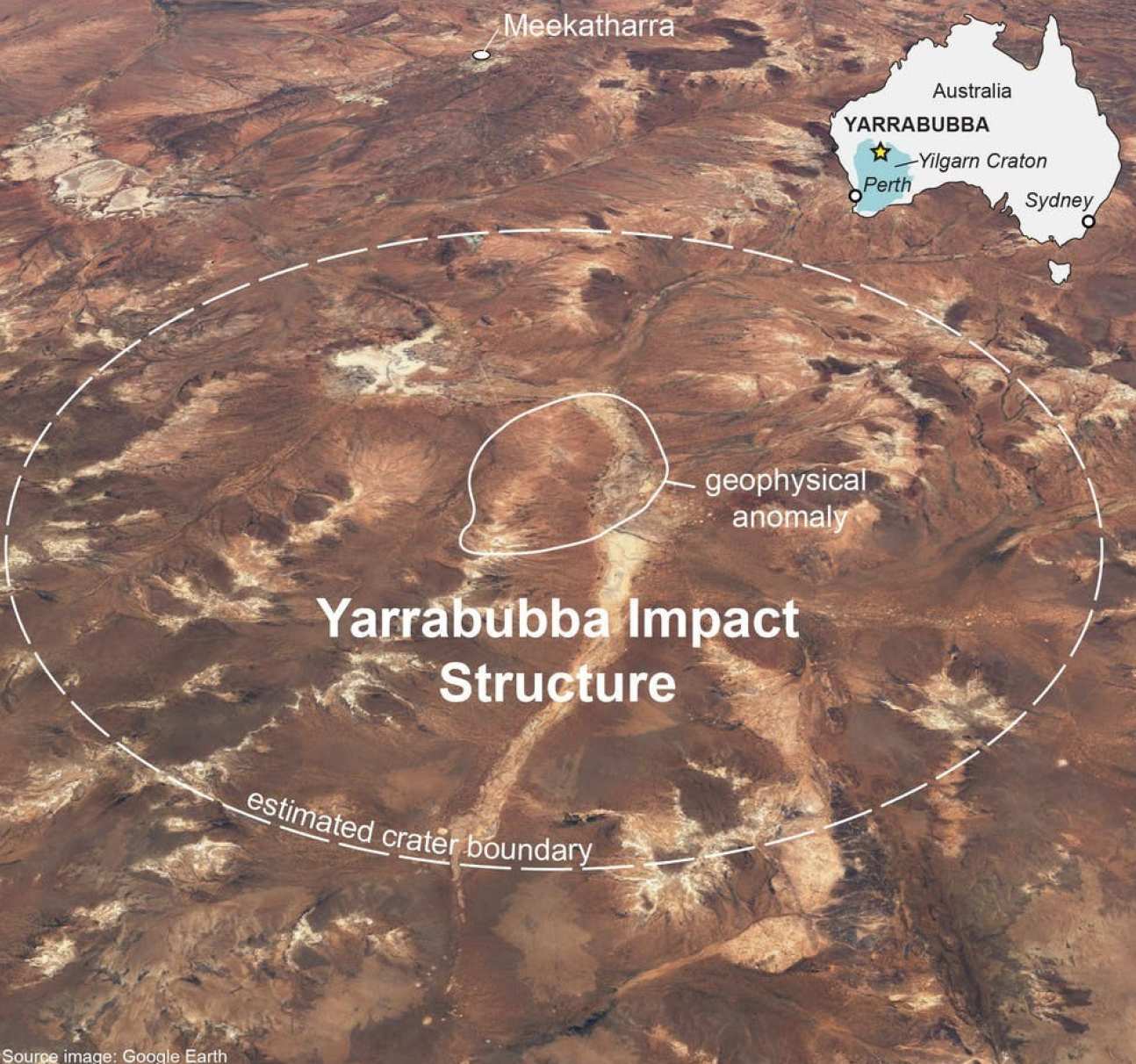Earth’s oldest known impact might have ended ‘snowball Earth’ ice age
New evidence has confirmed Australia’s Yarrabubba crater as the world’s oldest preserved impact structure - but did it thaw Earth and end an ice age?
The crater is regarded as one of Earth’s oldest, but until now has lacked a precise age. Now, a new study has used geological dating to pin the impact to 2.229 billion years ago – a time that coincided with Earth’s recovery from an ice age known as ‘Snowball Earth’, where most of Earth’s surface was covered with ice sheets between two and five kilometres thick.
To find a precise date for the asteroid strike, NASA and Curtin University researchers collected samples of minerals called zircon and monazite from the Yarrabubba crater in the Western Australian outback.

They then analysed the amount of uranium and lead in the minerals found in those samples.
Uranium decays and turns into lead over time at a known rate. The extreme temperatures and pressures associated with an asteroid strike causes minerals to lose their accumulated lead, resetting the ‘clock’. So, by knowing the amount of uranium and how long it takes to decay, they calculated that the crater is 2.229 billion years old, plus or minus five million years.
The new paper, led by NASA Johnson Space Centre and co-authored by Imperial College London, is published in Nature Communications.
Reconstructing destruction
The team realised that the new, more precise date of the impact meant that most of the Earth, including Australia, was covered with thick ice sheets at the time.
They also realised the impact came shortly before the global ice age ended, when the Earth began to warm (at 2.225 billion years, plus or minus three million years).

To investigate whether the impact itself could have triggered the end of the ice age, study co-author Dr Thomas Davison, of Imperial’s Department of Earth Science and Engineering, recreated the impact using computer simulations.
Dr Davison digitally recreated the same scenario believed to have happened at the time.
He modelled a seven-kilometre-wide asteroid striking an ice sheet between two and five kilometres thick at 17km per second. The simulated asteroid strike unleashed over 100 billion tonnes of water vapour into the atmosphere.
The researchers say that if the simulations are accurate, the released water vapour could have trapped heat in the stratosphere and created a short-term greenhouse effect.
In turn, this might have triggered or contributed toward global warming – and the end of Snowball Earth.
Dr Davison said: “Snowball Earth ended at almost the same time as the Yarrabubba impact. Is this a coincidence, or could the Yarrabubba impact event be an unexpected cause of global climate change?”
Oldest impact?

The researchers say that, although this is the oldest dated impact site, there may have been many more asteroid-caused injuries to Earth’s surface that were since healed with plate tectonics – the reshaping and transformation of rocks.
Earth has a continually changing surface due to tectonics and erosion, which means that very old impact craters are often difficult to identify, or lost to time.
For example, although impact ejecta material older than two billion years has previously been found and dated in parts of Australia and Africa, the corresponding impact craters could not be identified.
Western Australia, however, is good at preserving impact sites because it contains the Yilgarn Craton, one of Earth’s oldest surviving pieces of crust that hasn’t been altered by plate tectonics.
The research was funded by Science and Technology Facilities Council.
This story was adapted from a press release by Nature Communications.
Image credits:
Main image - NASA
Simulation video - Thomas Davison/Imperial College London
Image 2 - Nicholas Timms/Curtin University
Image 3 - Nicholas Timms/Curtin University
Image 4 - Timmons Erickson/Curtin University
“Precise radiometric age establishes Yarrabubba, Western Australia, as Earth’s oldest recognised meteorite impact structure” by Timmons M. Erickson, Christopher L. Kirkland, Nicholas E. Timms, Aaron J. Cavosie, Thomas M. Davison. Published 21 January 2020 in Nature Communications.
Article supporters
Article text (excluding photos or graphics) © Imperial College London.
Photos and graphics subject to third party copyright used with permission or © Imperial College London.
Reporter
Caroline Brogan
Communications Division